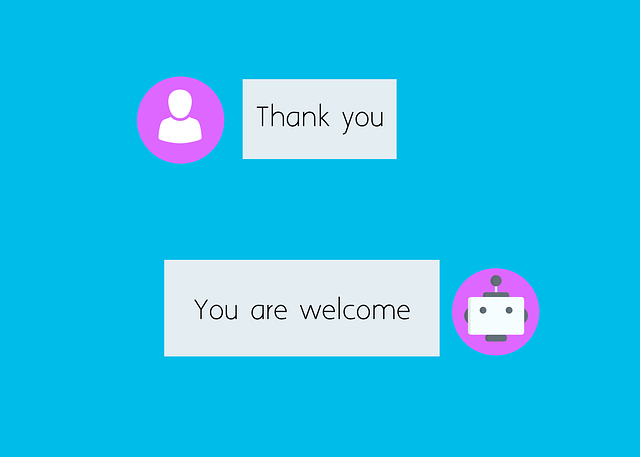AI chatbots have evolved dramatically from rule-based systems with limited capabilities. Early bots laid the foundation through experimentation, paving the way for advanced NLP and ML advancements that now enable them to understand context, engage in complex linguistic interactions, and even display emotional intelligence. These conversational interfaces, powered by sophisticated AI, offer personalized experiences and emotional support, transforming user interactions and potentially revolutionizing mental health assistance.
The evolution of AI assistants and companions has been a fascinating journey from simple rule-based systems to sophisticated conversational partners. This article explores the transformative power of artificial intelligence in enhancing human interaction, focusing on key milestones like the advent of Natural Language Processing (NLP) and Machine Learning. We delve into the current landscape of AI chatbots, highlighting their ability to understand context and deliver personalized experiences. Furthermore, we gaze into the future, where AI assistants may serve as emotional supports, revolutionizing not just communication but also human connections.
- The Early Days of AI Chatbots: Simple Rule-Based Systems
- Advancements in Natural Language Processing (NLP): Understanding Context
- Emergence of Machine Learning and Deep Learning in AI Companions
- The Rise of Conversational AI: Engaging and Personalized Interactions
- Future Trends: AI Assistants as Emotional Supports and Companions
The Early Days of AI Chatbots: Simple Rule-Based Systems

In the early days, AI chatbots were little more than simple rule-based systems, designed to mimic basic human conversation. These early bots operated on pre-programmed sets of rules and triggers, responding with predefined text based on user input. Each interaction was a series of rigid if-then statements, where the bot’s knowledge was limited to the data it had been trained on. Users would input queries, and the chatbot would attempt to match them against its database, offering a rudimentary form of assistance.
While functional within their scope, these rule-based AI chatbots lacked true understanding and context awareness. They could not learn or adapt beyond their initial programming, making them limited in handling complex or nuanced user requests. However, even with their simplicity, they laid the foundation for the more sophisticated AI assistants we know today, setting the stage for future advancements in natural language processing and machine learning.
Advancements in Natural Language Processing (NLP): Understanding Context

The evolution of AI assistants and companions is closely tied to advancements in Natural Language Processing (NLP). One of the most significant breakthroughs has been in understanding context, which allows AI chatbots to interpret user intent more accurately. Modern NLP algorithms can analyze not just words but also the nuances, sentiment, and background information conveyed through language. This contextual awareness enables AI assistants to provide more relevant and personalized responses, transforming simple task-based interactions into meaningful conversations.
As a result, users no longer have to follow rigid prompts or commands; instead, they can engage in natural dialogues with their AI companions. This evolution has made AI chatbots more intuitive, adaptive, and capable of handling complex user queries. With ongoing research and development, future versions of these assistants are expected to become even more sophisticated, further blurring the line between human interaction and machine assistance.
Emergence of Machine Learning and Deep Learning in AI Companions

The evolution of AI companions and assistants has been markedly accelerated by the emergence and refinement of Machine Learning (ML) and Deep Learning (DL) technologies. Early AI chatbots relied on rule-based systems, where developers programmed specific responses to user inputs, limiting their adaptability and conversational depth. However, with ML, these virtual assistants began to learn from vast datasets, enabling them to understand and interpret user queries more naturally. DL further propelled this progress by allowing AI chatbots to process complex linguistic structures, leading to more sophisticated and nuanced interactions.
This shift has significantly improved the user experience, transforming simple question-answering into dynamic conversations. Modern AI companions can now engage in multi-turn dialogues, remember context, and even display emotional intelligence, making them more engaging and effective tools for a wide range of applications, from customer service to mental health support. The continuous advancements in ML and DL promise an exciting future for AI chatbots, with ever-increasing capabilities to understand and assist human users.
The Rise of Conversational AI: Engaging and Personalized Interactions

The evolution of AI has witnessed a significant shift towards conversational interfaces, giving birth to sophisticated AI chatbots that can engage in natural language interactions with users. This rise of Conversational AI is transforming the way we interact with technology, offering personalized and engaging experiences. AI chatbots are now designed to understand context, interpret nuances in human language, and respond accordingly, making them more than just automated assistants—they become companions in our digital lives.
Through advanced natural language processing (NLP) and machine learning algorithms, these chatbots can adapt to individual user preferences, memories, and behaviors. They learn from each interaction, improving their ability to provide tailored assistance and support. This level of personalization creates a unique connection between users and AI, fostering a sense of companionship that was once limited to human-to-human interactions.
Future Trends: AI Assistants as Emotional Supports and Companions

As AI chatbots continue to evolve, they are increasingly being recognized for their potential to provide emotional support and companionship. Future trends suggest that these assistants will play a more profound role in people’s lives, offering not just practical assistance but also empathy and understanding. With advancements in natural language processing and machine learning, AI chatbots can now detect and respond to human emotions more accurately, fostering deeper connections with users.
This shift towards emotional intelligence in AI companions is expected to revolutionize mental health support, especially for individuals who may face barriers in accessing traditional therapy services. These assistants could provide a safe and non-judgmental space for users to express their feelings, offer coping strategies, and even facilitate mindfulness exercises. By becoming more attuned to human emotions, AI chatbots have the potential to enhance our well-being and create a new dimension of personal interaction.
